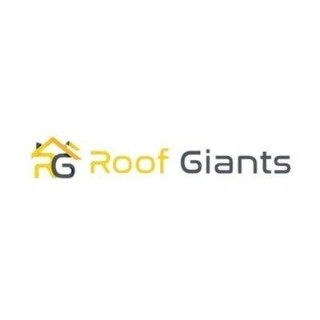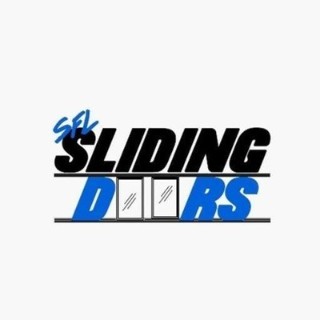About me
Yoga mat with the chakras, <a href="https://yogitimesboutique.com/products/7-chakra-mat"><span style="font-weight: 400;">visit </span></a><span style="font-weight: 400;"> at YOGI TIMES Boutique.
Hatha and contemplative yoga postures were formerly performed on the floor using a deer or tiger leather mat. Price, comfort, grip, and weight variations exist among contemporary chakra yoga mats. They are constructed from cork, hessian, plastic, and rubber.
The Chakra Yoga Mat is one of yoga's most widely advertised symbols.
The Bhagavadgita and the Shvetashvatara Upanishad advise doing meditational yoga on kusha grass, hard surfaces, or a rug made of deer or tiger skin.
When yoga originally gained popularity in the West, many people practiced on towels or linen mats.
Trikonasana was very difficult to maintain since the feet slipped on these surfaces.
Towel-sized German carpet underlay was imported to London by Angela Farmer in 1982. Richard Farmer, Angela's father, was the first person to market "sticky mats". Hugger Mugger Yoga Products produced the first Chakra Yoga Mat in the 1990s especially for that use. The firm first bought farmer-style rugs, but over time, they deteriorated.
Types
Chakra Yoga Mats vary in thickness, material, surface texture, "stickiness," weight, and price.
They are 180 centimeters long and 2 feet wide (61 cm). Chakra Yoga Mats are available in a variety of thicknesses, ranging from a thin, "travel" kind that is 1/16 inch (2 mm) to mats that are 14 inch (6 mm) thick and are designed for high performance or yoga treatment. There are mats that are patterned and in various colors. "Alignment mats" provide instructions to assist practitioners place their feet correctly. Some have been adorned. When not in use, travel mats may be folded into a square.
PVC yoga mats, which are less expensive and have a smooth surface, were the first "sticky" mats that were easily available on the market.
"Eco-friendly" mats include those made of rubber, natural jute, and organic cotton. Compared to cotton and jute mats, PVC mats are softer. Jute carpets are the most resilient; "sticky" PVC mats and certain contemporary textured mats also provide exceptional grip. Smooth mats provide the best grip for dynamic yoga forms like hot yoga and Ashtanga vinyasa, but they are less comfortable and show dirt more readily. [19] For yin yoga, which calls for prolonged holds, thicker mats are perfect. Compared to conventional mats, travel mats are less flexible and lighter.
Scandinavia uses cotton futon mats for its yoga lessons.
Over cotton, wool, or polyester-cotton blend pockets, they have machine-washable coverings. They are cushioned and grippy. But futon weights can go up to 4.7 kg.
Yoga Journal questioned five yogis about yoga mats. Some individuals loved "sticky" mats even though everyone agreed that mats shouldn't be slippery.
Hessian carpets were attractive, comfortable, and had a strong grip, but they were heavy. A cork mat, according to The Independent, provided some self-cleaning, a heated surface with a pleasing texture, and a reasonable amount of grip.
A smooth latex mat with a 4 mm thickness offered the finest grip for yin yoga and vigorous yoga. A circular mat works well for individual practice and sequences where a square mat would need to be turned 90 degrees at regular intervals. It was appropriate for teaching asanas to pupils as well.
Hatha and contemplative yoga postures were formerly performed on the floor using a deer or tiger leather mat. Price, comfort, grip, and weight variations exist among contemporary chakra yoga mats. They are constructed from cork, hessian, plastic, and rubber.
The Chakra Yoga Mat is one of yoga's most widely advertised symbols.
The Bhagavadgita and the Shvetashvatara Upanishad advise doing meditational yoga on kusha grass, hard surfaces, or a rug made of deer or tiger skin.
When yoga originally gained popularity in the West, many people practiced on towels or linen mats.
Trikonasana was very difficult to maintain since the feet slipped on these surfaces.
Towel-sized German carpet underlay was imported to London by Angela Farmer in 1982. Richard Farmer, Angela's father, was the first person to market "sticky mats". Hugger Mugger Yoga Products produced the first Chakra Yoga Mat in the 1990s especially for that use. The firm first bought farmer-style rugs, but over time, they deteriorated.
Types
Chakra Yoga Mats vary in thickness, material, surface texture, "stickiness," weight, and price.
They are 180 centimeters long and 2 feet wide (61 cm). Chakra Yoga Mats are available in a variety of thicknesses, ranging from a thin, "travel" kind that is 1/16 inch (2 mm) to mats that are 14 inch (6 mm) thick and are designed for high performance or yoga treatment. There are mats that are patterned and in various colors. "Alignment mats" provide instructions to assist practitioners place their feet correctly. Some have been adorned. When not in use, travel mats may be folded into a square.
PVC yoga mats, which are less expensive and have a smooth surface, were the first "sticky" mats that were easily available on the market.
"Eco-friendly" mats include those made of rubber, natural jute, and organic cotton. Compared to cotton and jute mats, PVC mats are softer. Jute carpets are the most resilient; "sticky" PVC mats and certain contemporary textured mats also provide exceptional grip. Smooth mats provide the best grip for dynamic yoga forms like hot yoga and Ashtanga vinyasa, but they are less comfortable and show dirt more readily. [19] For yin yoga, which calls for prolonged holds, thicker mats are perfect. Compared to conventional mats, travel mats are less flexible and lighter.
Scandinavia uses cotton futon mats for its yoga lessons.
Over cotton, wool, or polyester-cotton blend pockets, they have machine-washable coverings. They are cushioned and grippy. But futon weights can go up to 4.7 kg.
Yoga Journal questioned five yogis about yoga mats. Some individuals loved "sticky" mats even though everyone agreed that mats shouldn't be slippery.
Hessian carpets were attractive, comfortable, and had a strong grip, but they were heavy. A cork mat, according to The Independent, provided some self-cleaning, a heated surface with a pleasing texture, and a reasonable amount of grip.
A smooth latex mat with a 4 mm thickness offered the finest grip for yin yoga and vigorous yoga. A circular mat works well for individual practice and sequences where a square mat would need to be turned 90 degrees at regular intervals. It was appropriate for teaching asanas to pupils as well.
Posts made by Thea Sarkovic
There are no posts





